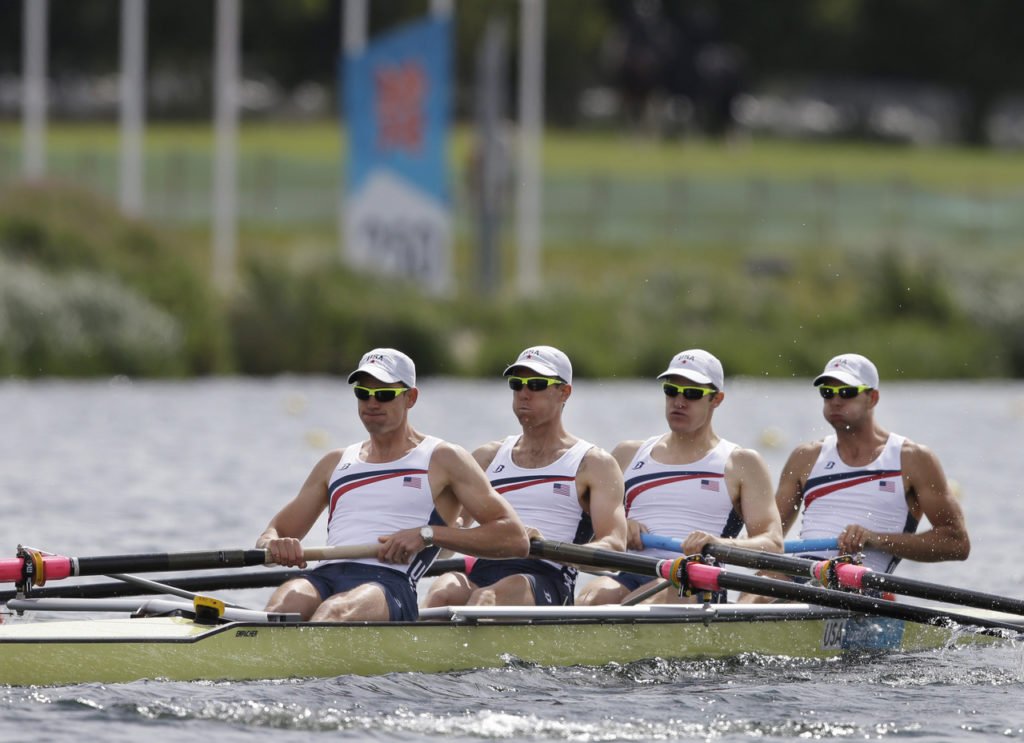When swimming in open waters, it pays to keep your ducks (or your goslings!) in a row. A recent study examined the waves generated behind adult water fowl and found that babies following directly behind them benefit from their wake. In the right spot behind its mother, a duckling sees 158% less wave-drag than it would when swimming solo. That’s such a large reduction that the duckling actually gets pulled along! And the advantage doesn’t just help one duckling; a properly-placed duckling passes the benefit on to its siblings as well. So any duckling that stays in line has a much easier time keeping up, but those who slip out of the ideal spot will have a much tougher time. (Image credit: D. Spohr; research credit: Z. Yuan et al.; via Science News; submitted by Kam-Yung Soh)
Tag: wave drag

Rio 2016: Swimming
 Strange as it seems, elite swimmers are faster when swimming underwater than they are at the surface. So much so, in fact, that they’re restricted to being underwater only 15 m after a dive or turn. To see just how stark a difference this makes, check out this crazy video. (I know, right?!)
Strange as it seems, elite swimmers are faster when swimming underwater than they are at the surface. So much so, in fact, that they’re restricted to being underwater only 15 m after a dive or turn. To see just how stark a difference this makes, check out this crazy video. (I know, right?!)To understand how this is possible, it helps to look at the three types of drag a swimmer experiences: pressure drag, skin friction, and wave drag. Pressure drag is probably the most familiar; it’s the drag that comes from the swimmer’s shape and how the fluid moves around it. Skin friction is the drag that comes from viscous friction between the swimmer and the water. The final type, wave drag, comes from the energy expended to create waves at the surface of the water. As you might expect, energy that goes into splashing is energy that isn’t going into propulsion.
When swimming at the surface, swimmers experience a lot of wave drag. At least one experiment showed that wave drag accounted for most of a surface swimmer’s drag. In contrast, at a depth of more than 0.5 m, a swimmer’s wave drag is virtually negligible. The submersion does come at the cost of higher skin friction (since more of the swimmer is in contact with the water), but there is also more opportunity for useful propulsion since both sides of a kick can move water (and not air.) Bonus read for those interested in more: Is the fish kick the fastest stroke yet? (Image credits: AP; B. Esposito)
Previously: what makes a pool fast?
Join us throughout the Rio Olympics for more fluid dynamics in sports. If you love FYFD, please help support the site!

London 2012: Rowing Physics
In rowing, as in any water sport, drag comes in three varieties: skin friction, form (or pressure) drag, and wave drag. Skin friction comes from the friction between the hull and water causing the boat to drag water with it as it moves. This can be mitigated with the right materials and surface finish but will never be completely negligible. In fact, the racing shells used in rowing are unusual for boats because skin friction is their major source of resistance. This is because form drag, caused by the shape of the boat cutting through the water, and wave drag, the energy lost due to the waves that form along the hull, are small in racing shells due to their long, narrow, and streamlined shape. Because skin friction dominates among the three types of drag, the force a rower overcomes to move the boat is proportional to the hull’s velocity squared, and the power required to do so is proportional to the hull’s velocity cubed. This means that it is more efficient for rowers to keep a constant hull speed throughout a race than it is to start slow and speed up or start fast and slow down because the work (power x time) needed to keep a constant speed is smaller. For more on the physics of rowing, check out Anu Dudhia’s excellent website or this video from Physics of Life. (Photo credits: Ecouterre, AP)
FYFD is celebrating the Olympics by featuring the fluid dynamics of sport. Check out some of our previous posts, including what makes a pool fast, how divers reduce splash, and the aerodynamics of badminton.


 Strange as it seems, elite swimmers are faster when swimming underwater than they are at the surface. So much so, in fact, that they’re restricted to being underwater only 15 m after a dive or turn. To see just how stark a difference this makes,
Strange as it seems, elite swimmers are faster when swimming underwater than they are at the surface. So much so, in fact, that they’re restricted to being underwater only 15 m after a dive or turn. To see just how stark a difference this makes, 

